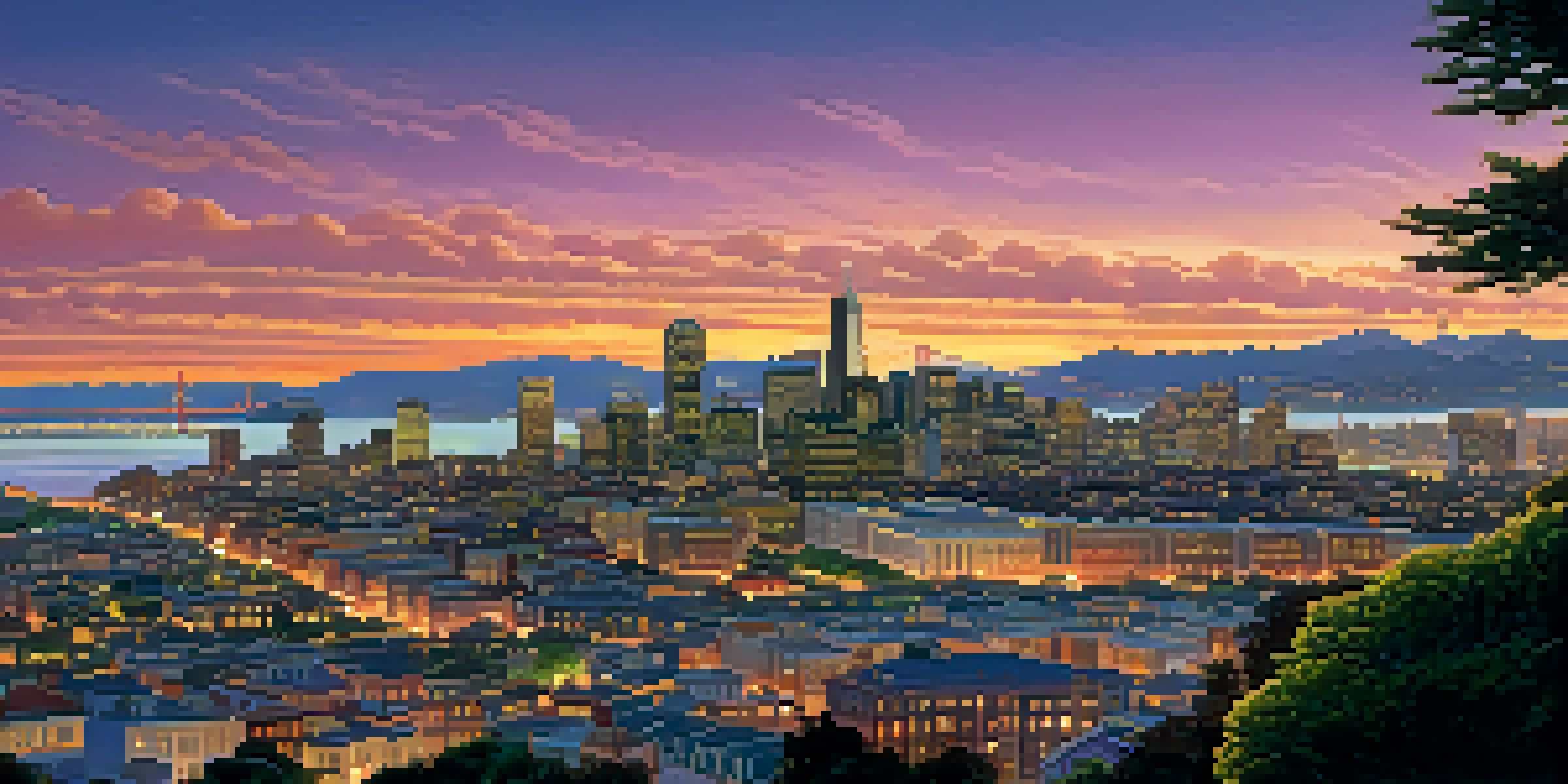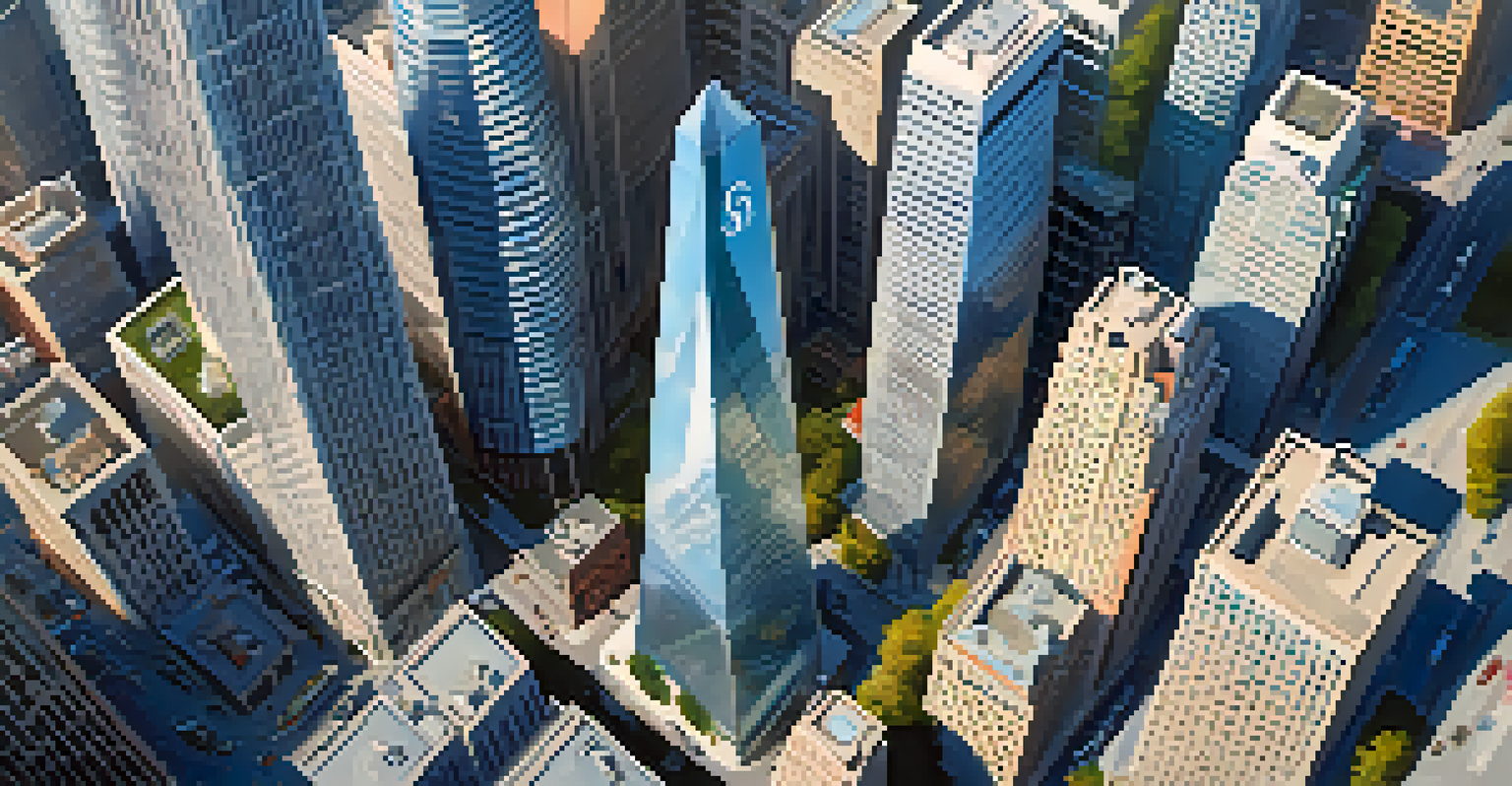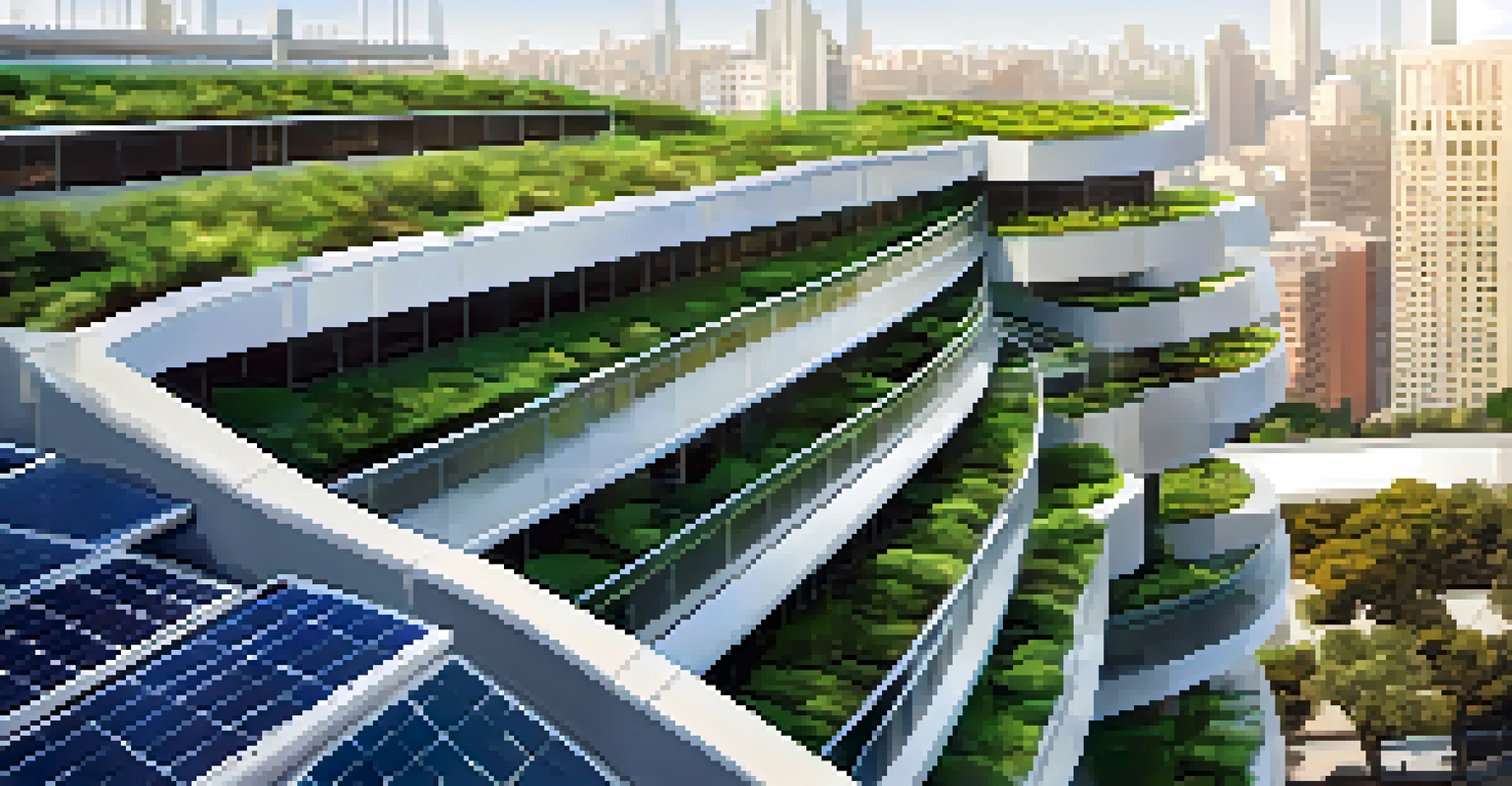Modern Skyscrapers: Defining San Francisco's Skyline Today

The Evolution of San Francisco's Skyline
San Francisco's skyline has undergone a remarkable transformation over the decades. From the early Victorian buildings to Art Deco masterpieces, the city has always embraced change. Today, modern skyscrapers stand as symbols of innovation and progress, reflecting the city's spirit.
The greatest glory in living lies not in never falling, but in rising every time we fall.
These towering structures, made of glass and steel, not only redefine the skyline but also the way we experience urban life. They offer breathtaking views of the Bay, the Golden Gate Bridge, and beyond, attracting both residents and tourists. Each new addition tells a story of architectural ambition and the desire for sustainability.
As we look up at these giants, it's clear that they represent more than just office space; they embody the dreams and aspirations of a city that continues to evolve. The skyline is not just a backdrop; it's a living narrative of growth and resilience.
The Impact of Technology on Skyscraper Design
The rise of technology has significantly influenced how modern skyscrapers are designed. Innovations such as computer-aided design (CAD) and advanced materials have allowed architects to push the boundaries of what’s possible. These technologies enable the creation of more complex and energy-efficient structures.

For instance, the Salesforce Tower not only stands tall but also incorporates sustainable features like a rainwater harvesting system and energy-efficient systems. This commitment to sustainability is not just a trend; it's becoming a standard in modern architecture, reflecting the city's values.
San Francisco's Skyline Reflects Change
The city's skyline showcases a blend of historical and modern architecture, symbolizing its ongoing evolution and resilience.
Moreover, technology continues to inspire creativity in skyscraper design, leading to unique shapes and forms that enhance the skyline's aesthetic appeal. As a result, San Francisco's skyline is not only practical but also a canvas for artistic expression.
Sustainable Skyscrapers: A Greener Future
Sustainability is at the forefront of modern skyscraper development in San Francisco. As concerns about climate change grow, architects are increasingly focusing on creating buildings that are eco-friendly. This shift is not merely about compliance; it's about a vision for a sustainable urban future.
Architecture is the art of how to waste space.
Buildings like the Tower at 555 Mission Street are designed with green roofs, solar panels, and efficient HVAC systems, aiming to reduce their carbon footprint. These features not only contribute to environmental conservation but also enhance the quality of life for occupants.
By prioritizing sustainability, modern skyscrapers are setting a precedent for future developments. They symbolize a commitment to preserving the beauty of San Francisco while accommodating the needs of a growing population.
Cultural Significance of San Francisco's Skyscrapers
Modern skyscrapers in San Francisco are more than just architectural feats; they are cultural landmarks that reflect the city’s identity. Each building tells a story, representing the melding of history and modernity. For many, they evoke feelings of pride and belonging.
Take, for instance, the Transamerica Pyramid, which has become synonymous with San Francisco. Its unique shape and prominence in the skyline make it a symbol of the city’s resilience and innovation. Similarly, the Salesforce Tower has quickly become a beacon of modern enterprise and creativity.
Technology Drives Skyscraper Design
Innovations in design and sustainability are shaping skyscrapers, making them not only visually striking but also eco-friendly.
These structures not only serve practical purposes but also foster a sense of community and connection among residents. They remind us of the city’s rich history while illustrating its bright future.
Iconic Skyscrapers and Their Influence
Several iconic skyscrapers play a pivotal role in shaping San Francisco's identity. These buildings are not just visually stunning; they also influence the city's economy and culture. Their presence attracts businesses, tourists, and residents alike, contributing to a vibrant urban environment.
The Salesforce Tower, for example, has become a hub for tech innovation and entrepreneurial spirit, drawing talent from around the globe. Its design symbolizes the city's tech-driven future while providing a space for collaboration and creativity.
As these skyscrapers rise, they elevate the city's status on the global stage, showcasing San Francisco as a leader in architecture and innovation. Their influence extends beyond aesthetics, impacting the local economy and community dynamics.
Challenges in Skyscraper Development
While modern skyscrapers enhance the skyline, their development comes with challenges. Issues like zoning regulations, environmental concerns, and community opposition can complicate the process. Navigating these challenges requires careful planning and collaboration among stakeholders.
For instance, developers often face restrictions on height and design to preserve views and historical contexts. Balancing innovation with the need to respect the city’s character can be a delicate dance, requiring creativity and compromise.
Cultural Landmarks Foster Community
Iconic skyscrapers serve as cultural symbols, enhancing community identity and pride while also influencing the local economy.
Moreover, the importance of community engagement cannot be overstated. Successful skyscraper projects often involve input from local residents, ensuring that new developments meet the needs and desires of the community.
The Future of San Francisco's Skyline
As we look to the future, San Francisco's skyline is poised for even more transformation. With ongoing projects and proposals, the city is set to add more skyscrapers that reflect its evolving identity. Each new structure will bring with it a blend of innovation, sustainability, and cultural significance.
Emerging trends suggest that future skyscrapers will focus even more on green technology and community spaces. Developers are increasingly recognizing the need to create buildings that not only house businesses but also foster connections among residents.

Ultimately, the future of San Francisco's skyline is bright and dynamic. As new designs emerge, they will continue to shape the city’s character, inspiring future generations to dream big and reach for the sky.